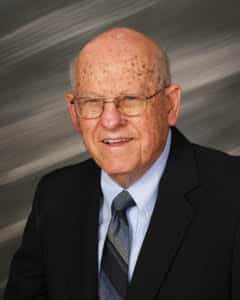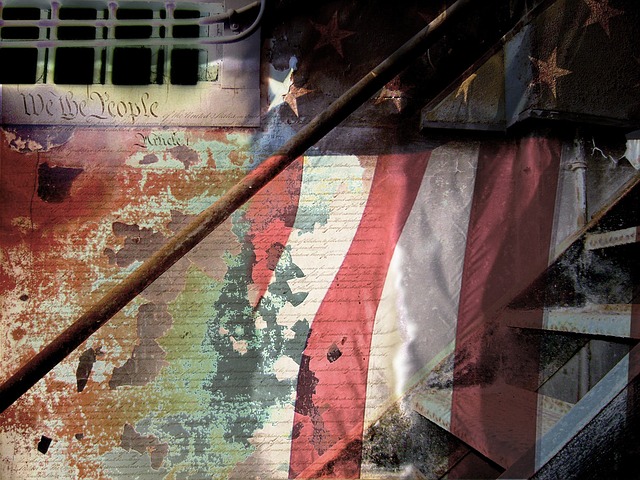
It seems ironic that the most contentious issue on the 242nd anniversary of the Declaration of Independence, which parted the colonies that formed the United States of America from their mother country, is the separation of children from their mothers or other family members crossing our southern borders illegally.
The former situation led to a war out of which came a constitutional republic whose foundational documents remain the envy the world. The latter has evolved into a partisan political battle that may not be resolved until the mid-term elections this fall.
Some fear the end result could be the disappearance of this nation as we know it. The successor would be a country not only without borders or laws restricting who may enter but lacking the mores — and language —that unite us as a people.
For many, the nation already is a far cry from the faith-based vision of the 56 signers of the Declaration of Independence adopted on July 4, 1776, who “with a firm reliance on the protection of divine Providence,” pledged “our lives, our fortunes and our sacred honor” to its support.
Nine of those signers gave their lives fulfilling that pledge. Another 17 lost their property and all that they had backing the cause they felt was God-ordained. And in that belief may be the solution to today’s border problem.
During the century after that brave start, the new nation of fewer than 5 million citizens welcomed 70 million immigrants because land was plentiful, industry was expanding and job opportunities were growing.
For the most part, the newcomers were from the same northern European or Scandinavian homelands as those already here. The immigrants assimilated easily because the vast majority were Protestant like 52 of the signers (including one pastor and three others who trained for the clergy) who were active in the Anglican (today’s Episcopal), Congregational, Presbyterian, and other churches.
Separation of immigrant families was voluntary as one member might come to America for a job and earn money to bring other members later. A child might come first to live with an uncle or aunt for job apprenticeship or schooling where nearly all schools were church related and many were free.
Even 106 of the first 108 universities in this country were church sponsored. Many of the earliest ones — Harvard, Brown, Yale, Princeton, William and Mary — began as seminaries to train clergymen.
From about 1870 until the Great Depression of the 1930s, most immigrants to the U.S. came from southern and eastern Europe and the Far East, particularly China. For the most part, they were more poor than earlier immigrants, less educated, culturally different, and overwhelmingly Catholic, Eastern Orthodox or Jewish.
Consequently those newcomers tended to congregate in communities of their own making rather than assimilate where they might learn of and be impacted by the historic foundations of this nation.
In the past few decades, according to a study done by Dr. Leah Schmalzbauer, of Montana State University, for the National Council of Family Relations, millions of poor women from what is called the Global South (including Latin America) have migrated to the Global North (including the U.S.) in search of wages to support their families at home.
The (mostly legal) migration is fueled “by the feminization of the low-wage care industry in the U.S., Europe, and the Middle East, where there is a high demand for poor women to clean our homes, hospitals and hotels and to care for our children,” writes Dr. Schmalzbauer. “Women who cannot afford to be with their own children are migrating en masse to care for the children of others.”
So a dwindling number of the American population has been steeped in our history and culture and our public schools are too afraid of being politically incorrect to fully expose recent generations to our past.
Yet much can be learned of what made America great by examining the events culminating in the celebration of the Fourth of July and the subsequent adoption of our Constitution.
The way to the solution of the present problem of the separation of families at the border might even be found in heeding the words of Benjamin Franklin when months of political bickering threatened to derail the Constitutional Convention in the fall of 1787.
After noting that the august body had studied the ancient history of governments and examined modern approaches, to no avail, Franklin had a suggestion:
“Groping as it were in the dark to find political truth, and scarce able to distinguish it when presented to us, how has it happened, Sir, that we have not hitherto once thought of humbly applying to the ‘Father of lights’ (a reference to God as found in the Bible passage in the book of James at 1:17) to illuminate our understanding?
“Have we now forgotten that powerful friend? Or do we imagine that we no longer need his assistance?
“I have lived, Sir, a long time, and the longer I live, the more convincing proofs I see of this truth — that God governs in the affairs of men.”
Amen!
Adon Taft, retired, was a reporter for The Miami Herald for 48 years. During the 37 years he was the religion editor he won numerous awards including the Supple Memorial Award, the top prize in the field of the reporting of religion news. He now lives in Brooksville, FL.

